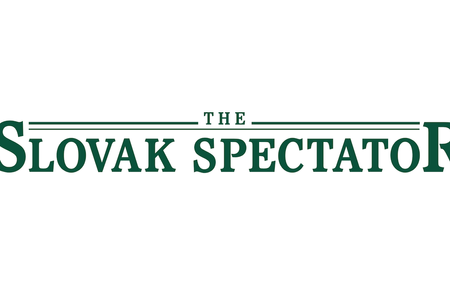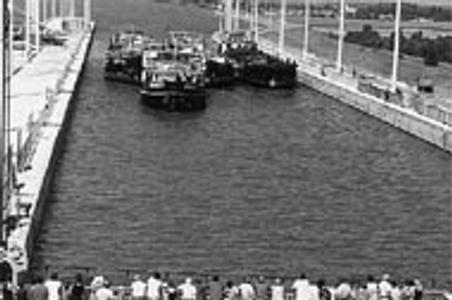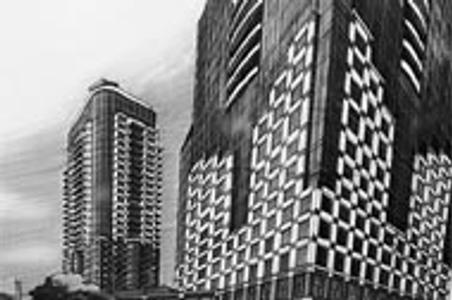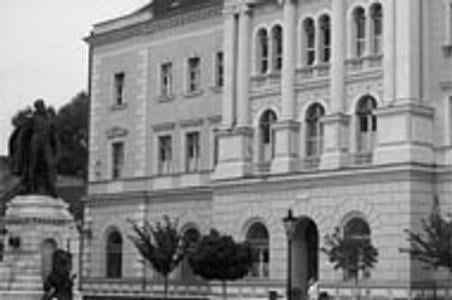Archive of articles - August 1996, page 3
If you desire to read an old article, use the search bar or select the publication date.
Substantive obstacles stall foreign investment
In competition, there are winners and losers. Attracting foreign direct investment is a distinct competition, where the post-communist countries of central and eastern Europe are pitted against each other to coax some of the world's biggest companies to invest huge sums of money on their soil. In this game for now, Slovakia is losing out. Statistics released by the Vienna Institute for International Economic Comparisons (WIIW) show that Slovakia lured only $25 million in the first quarter of 1996, fifth out of six in the region. Since 1989, Slovakia's share of direct investments places it far below its Visegrád comrades against whom it is frequently measured - Poland, Hungary and the Czech Republic - and only higher than Slovenia (see table, page 4).
The Hague to rule on Gabčíkovo
Two decades into the long saga of the Gabčíkovo dam project, an end has finally come into sight: After almost two years of waiting, Slovakia and Hungary will present their cases before the International Court of Justice in The Hague, the Netherlands, on February 17, 1997. The center of the dispute is a 1977 treaty that outlined plans for a massive hydroelectric power station on the Danube. Stretching from the Slovak village of Gabčíkovo to Nagymaros on Hungary's Danube bend, the system of two dams was to provide a cheap, almost unlimited source of power.
Canadian investor thinking big for Nové Mesto; some say too big
With row after row of vacant parking spaces separated by swaths of scraggly lawn, the lot outside Richard Frimmel's office window is a student driver's paradise. But since auto school training grounds do not bring in revenue, Frimmel, the mayor of Bratislava's Nové Mesto district, has been ambitiously seeking investors to develop a grand complex on the space. This past June, he found his man. Andrew Sarlos, a Canadian investor of Hungarian origin, committed 6 billion Sk ($200 million) to a business, administrative, and cultural complex that would include three towers of more than 20 floors each. But while the announcement justified Frimmel's lofty goals and salesmanship, it also raised the question whether the project is too big for Bratislava.
RM-System flooded by bond-holders seeking cash
At five o'clock in the morning on Monday, August 5, hundreds of Slovaks started lining up in front of RM-System offices all over the country hoping to trade bonds for instant cash. This was the day the National Property Fund (FNM) had set where bonds valued at 10,000 Sk issued by the government in bond privatization could be offered to trade on the RM-System. The problem was that many of those who gathered in line thought that this meant they would receive money for their bond on this day. In fact many left dissappointed and confused learning that they were only offering their bonds to be sold until an FNM approved company could buy them though no one had bought any on the system yet.
Komárno is the most Hungarian of Slovak cities
Held under siege by the Turks, home of an anti-Hapsburg rebellion, destroyed by a series of earthquakes in the late 18th century, and divided between two countries after World War I, Komárno, located approximately 100 kilometers southeast of Bratislava, has had a turbulent history politically, militarily and seismically. As the most Hungarian of Slovak towns, it often seems as though Hungarian is the only language heard on Komárno's street (though communicating in Slovak is no problem). These elements combine to make this small city of 32,000 people an interesting place to spend an afternoon, though not much longer.
The unceasing environmental debate:
These days, it's hard to tell who's right about Gabčíkovo, for the environment of the area is as tangled as the twining arms of the river itself. The area was at risk well before the dam was conceived: the deep bed of the main channel or "Old Danube" was dredged in the beginning of the century to clear a passage for ships. Each year, as the fast river current dragged more and more rock downstream, the gravel bed slipped lower and lower; as the bottom sank, so did the water level. Eventually, the water level in the main channel lay feet below the base of the side branches. Without fresh river water flowing into them, the side branches became stagnant, and then dry.
Bratislava is brimming with extracurricular activities
For many families, the start of the school year - which will be here sooner than you think - means a search for after-school activities for the kids. Slovakia has a rich base of extracurricular activities, oftentimes at rock-bottom, state-subsidized prices. Take the Základná Umelecká Škola (Basic Art School) system, for example. Bratislava alone has about a dozen schools which offer group and individual lessons in art, dance and music. Since the courses, times and prices vary by school, it is best to contact the school in your neighborhood. However, as an example, the school on Exnárova ulica offers group painting and dance lessons for 25 Sk a month, and individual instrumental instruction for 40 Sk a month; most classes meet twice a week. They do have an English-speaking teacher for dance and painting, so children without Slovak speech skills are welcome.
Surf's up at Košice's Internet Café
KOŠICE - Riding an international wave of public centers for Internet surfing, Košice has thrust itself onto the tide's tip as Slovakia's first locale for hooking onto the global computer network in a pay-as-you-go style. Opened on July 17, the Internet Café is Slovakia's first but not only site that offers full access to the Internet to anyone who pays a half-hour flat fee. For Juraj Barta, director of Novisys, the Košice-based retail and wholesale computer company, the café is a natural evolution from his core business of offering original information technology solutions. "We found something we could offer that no competitor here has," Barta said.
For dinner in the woods, try Koliba Expo
Set on a forested hill above Bratislava, Koliba Expo offers very good food in a quiet, woodsy atmosphere. The restaurant, unfortunately, is not accessible by public transportation. However, if you are in the mood for hiking or want to justify the calories, take the 213 trolley-bus in the "Koliba" direction to the end, then walk uphill through the park about 20 minutes. Well placed signs point the way. The restaurant's inside seats 90 and there is room for 50 on the terrace in the summer. If you dine on the terrace, bring plenty of mosquito repellent! We were not the only ones having a meal - so were the mosquitos!
- No more photos or bank statements? Slovakia moves to ease residence process
- Weekend: Celebration of fun comes to Malacky Photo
- News digest: Prosecutor seeks jail for NBS Governor Kažimír as his political support wanes
- Top 10 events in Bratislava for foreigners
- Convicted of multiple murders, Slovakia’s mafia boss seeks release from prison
- Slovakia loses another EV model to Spain as Stellantis chooses Zaragoza over Trnava
- Slovak female triathlete shatters barriers with historic win at Himalayan event
- Last Week: Slovakia’s central bank governor still faces bribery case verdict
- No more photos or bank statements? Slovakia moves to ease residence process
- Weekend: Celebration of fun comes to Malacky Photo
- Maria Theresa on the banks of Bratislava
- Top 10 events in Bratislava for foreigners
- News digest: Fico’s bloc wants to save money by restricting electoral access
- 3 free things to do in Bratislava in the next seven days
- Digital Jarvis is real now. He is coming for your to-do list
- Slovakia plans to restrict access to new medicines amid funding shortfall
- Maria Theresa on the banks of Bratislava
- No more photos or bank statements? Slovakia moves to ease residence process
- News digest: Violent gang in Bratislava is under arrest
- 3 free things to do in Bratislava in the next seven days
- The Kremlin’s security agency has a Russian contractor in Slovakia - no one has noticed
- Weekend: Celebration of fun comes to Malacky Photo
- Digital Jarvis is real now. He is coming for your to-do list
- Top 10 events in Bratislava for foreigners
- Maria Theresa on the banks of Bratislava
- A mayor resigns over €2.7 million fraud scandal at town hall
- Show me your moves! Slovak hockey stars share their best pick-up lines
- No more photos or bank statements? Slovakia moves to ease residence process
- He designed Gatwick. But this is his masterpiece
- Fico praises China and Vietnam as models, says liberal democracy has failed
- News digest: Violent gang in Bratislava is under arrest
- The compass points to Kúty, and people are starting to follow
- News digest: Prosecutor seeks jail for NBS Governor Kažimír as his political support wanes
- Slovakia loses another EV model to Spain as Stellantis chooses Zaragoza over Trnava
- Slovak female triathlete shatters barriers with historic win at Himalayan event
- Weekend: Celebration of fun comes to Malacky Photo
- News digest: Fico’s bloc wants to save money by restricting electoral access
- Slovakia plans to restrict access to new medicines amid funding shortfall
- No more photos or bank statements? Slovakia moves to ease residence process
- Top 10 events in Bratislava for foreigners More articles ›








